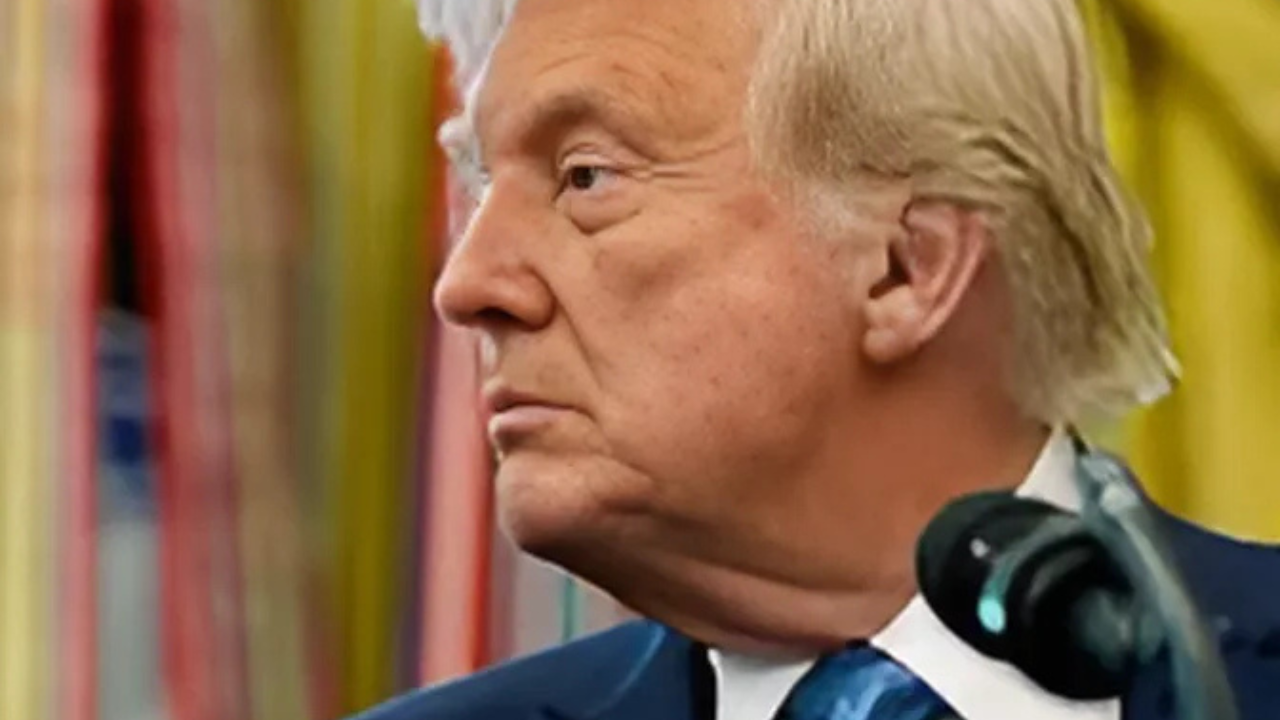
By: Rimi
Published on: Apr 24, 2025
Global markets staged a dramatic turnaround this week after US President Donald Trump signaled a potential de-escalation in the US-China trade war, vowing to cut tariffs on Chinese imports “substantially.” The announcement, coupled with a softer tone toward Federal Reserve Chair Jerome Powell, injected optimism into risk assets, lifting equities, strengthening the US dollar, and triggering a retreat in safe-haven gold. Here’s a breakdown of the key developments and their implications for investors.
Speaking at the White House on Tuesday, President Trump confirmed plans to reduce tariffs on Chinese goods, stating, “They won’t be zero, but we’re cutting them substantially.” This marked a stark reversal from his administration’s aggressive trade policies, which had imposed tariffs on over $300 billion worth of Chinese imports since 2018.
The remarks followed earlier comments by Treasury Secretary Scott Bessent, who called high tariffs “unsustainable” and hinted at a potential thaw in trade tensions. Analysts interpreted the coordinated messaging as a strategic pivot to ease economic pressures ahead of the 2024 election cycle.
Cost Relief for Businesses: Lower tariffs could reduce input costs for US manufacturers reliant on Chinese components.
Inflation Mitigation: Cheaper imports may help cool stubborn inflation, a key concern for the Federal Reserve.
Supply Chain Stability: Reduced trade barriers could incentivize multinational firms to reinvest in global supply chains.
In a separate development, Trump walked back his earlier criticism of Federal Reserve Chair Jerome Powell, telling reporters, “I have no intention of firing him.” This contrasted sharply with a recent Truth Social post where he labeled Powell “Mr. Too Late, a major loser” over the Fed’s cautious approach to rate cuts.
Trump emphasized his desire for the Fed to “be a little more active” in lowering interest rates, calling the current economic climate “a perfect time” for monetary easing. The comments alleviated fears of political interference in central bank decisions, a concern that had rattled markets earlier in the week.
US stock futures surged immediately after Trump’s remarks:
Dow Jones: +1.13%
S&P 500: +1.51%
Nasdaq Composite: +1.76%
Asian markets followed suit, with Hong Kong’s Hang Seng Index jumping 2.4%, Japan’s Nikkei 225 rising 1.91%, and South Korea’s Kospi climbing 1.54%. The rally reflected renewed confidence in global growth prospects as trade tensions eased.
The US dollar index (DXY) soared over 1% to 99.25, rebounding from a three-year low near 98. Haven currencies like the euro (EUR/USD), Swiss franc, and yen retreated as investors shifted to risk-on assets. Notably, the euro fell below 1.14 against the dollar, down from a multi-year high above 1.15 just days earlier.
US government bonds saw a relief rally, particularly in long-dated Treasuries:
10-year yield: Rose 5 basis points to 4.35%
30-year yield: Jumped 8 basis points to 4.8%
The two-year Treasury yield, sensitive to interest rate expectations, increased 6 basis points to 3.8%, signaling reduced bets on aggressive Fed rate cuts.
Comex gold futures plummeted from 3,510to3,510to3,355 per ounce as demand for safe havens waned. Spot gold prices fell over 4% from Monday’s record high of $3,343, with analysts citing profit-taking and reduced geopolitical anxiety.
In contrast, Bitcoin rallied 6.25% in 24 hours, breaching 93,400(€82,000).Thecryptocurrency’sresilience—maintaininglevelsabove93,400(€82,000).Thecryptocurrency’sresilience—maintaininglevelsabove84,000 (€73,000) despite tech stock volatility—highlighted its growing appeal as a hedge against fiat currency risks.
Futures pointed to a strong open for European indices:
Euro Stoxx 50: +1.73%
Germany’s DAX: +2.49%
UK’s FTSE 100: +1.1%
Investors awaited key economic data, including Eurozone PMI figures, to gauge the region’s manufacturing and services activity. A rebound in business sentiment could further fuel the rally.
While markets welcomed Trump’s tariff signals, analysts warned against premature celebrations. Michael Brown, Senior Research Strategist at Pepperstone, noted:
“Participants remain jittery as the haven value of Treasuries and the USD is questioned, and trade uncertainty lingers.”
Key concerns include:
Implementation Risks: Tariff reductions could face political pushback.
Fed Policy Delays: Rate cuts may lag behind market expectations.
China’s Response: Beijing’s willingness to reciprocate tariff cuts remains unclear.
US-China Negotiations: Further details on tariff reductions and trade terms.
Federal Reserve Meetings: Powell’s response to Trump’s rate cut pressure.
Global PMI Data: Insights into economic resilience amid shifting trade policies.
Cryptocurrency Trends: Bitcoin’s correlation (or lack thereof) with traditional assets.
President Trump’s tariff pivot and softened Fed critique have injected short-term optimism into global markets. However, sustaining this rally requires concrete policy actions, continued de-escalation in US-China relations, and alignment between the White House and the Federal Reserve. Investors should remain agile, balancing exposure to cyclical equities with strategic hedges in gold or Bitcoin as the trade war narrative evolves.
Comments
No comments yet. Be the first to comment!
Leave a Comment